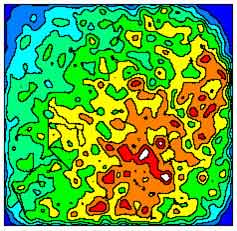
Handy Links
SLAC News Center
SLAC Today
- Subscribe
- Archives: Feb 2006-May 20, 2011
- Archives: May 23, 2011 and later
- Submit Feedback or Story Ideas
- About SLAC Today
SLAC News
Lab News
- Interactions
- Lightsources.org
- ILC NewsLine
- Int'l Science Grid This Week
- Fermilab Today
- Berkeley Lab News
- @brookhaven TODAY
- DOE Pulse
- CERN Courier
- DESY inForm
- US / LHC
SLAC Links
- Emergency
- Safety
- Policy Repository
- Site Entry Form

- Site Maps
- M & O Review
- Computing Status & Calendar
- SLAC Colloquium
- SLACspeak
- SLACspace
- SLAC Logo
- Café Menu
- Flea Market
- Web E-mail
- Marguerite Shuttle
- Discount Commuter Passes
-
Award Reporting Form
- SPIRES
- SciDoc
- Activity Groups
- Library
Stanford
Around the Bay
SLAC’s First Ultrafast X-Ray Facility Retires
 By generating the world’s shortest bunches of electrons and turning them into ultrafast pulses of x-ray light, the Sub-Picosecond Pulse Source observed a previously unseen world where atoms and materials move too quickly for synchrotron x-ray beams and are too small for ultrafast visible light lasers.
By generating the world’s shortest bunches of electrons and turning them into ultrafast pulses of x-ray light, the Sub-Picosecond Pulse Source observed a previously unseen world where atoms and materials move too quickly for synchrotron x-ray beams and are too small for ultrafast visible light lasers.
After a series of runs during the past three years, the remarkable experiments conducted with SPPS are coming to an end March 20 to make way for construction of its successor, the Linac Coherent Light Source.
“It’s been extremely successful both scientifically and technically looking toward LCLS. Our only regret is that it’s ending,” said SPPS head Jerry Hastings.
SPPS experiments: measured the earliest atomic motions that occur when a solid melts; learned how to put data in order chronologically by successfully time-stamping the arrivals of the x-ray pulse and the laser pulse used to start chemical reactions; explored how to use light to control and shape the potential-energy surface that determines where atoms go and the forces they feel; and observed atoms vibrating on 100-femtosecond time scales.
The fruitful collaboration included about 50 researchers from 10 institutions, a significant increase over traditional synchrotron x-ray collaborations.
“It’s a testament to how unique the source was that everyone wanted to get a hand in and try an experiment,” said Aaron Lindenberg.
Useful Links:
SPPS home page
Article on SPPS experiments
How ultrafast pulses are made
—Heather Rock Woods SLAC Today March 1, 2006